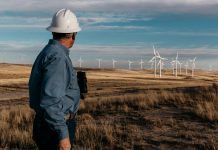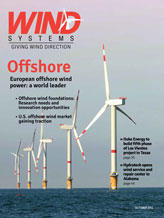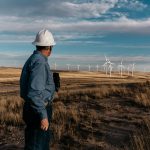Every year, fall seems to be a good time to take inventory on progress in the offshore segment of the U.S. wind energy industry. That’s largely because the approaching end of the year (always a popular time to look back) coincides with the American Wind Energy Association’s annual Offshore WINDPOWER Conference & Exhibition. Offshore WINDPOWER 2014 takes place Oct. 7-8 in Atlantic City, New Jersey.
While steady progress has been made throughout 2014, the immediate run-up to U.S. offshore wind energy’s marquis event of the year has included a flurry of activity in the offshore arena. Let’s take a look at what’s taken place just in the last few months for an industry segment that has yet to start construction on its first project here in the U.S. but is clearly getting closer to doing so.
Block Island Gets Final Federal Approval
Last month offshore wind energy developer Deepwater Wind received a key federal approval needed to build its Block Island Wind Farm, a 30 MW project that’s among those in the most advanced stages of development in the U.S.
Granting the approval for the project, which is to be located off the Rhode Island coast three miles from Block Island, was the U.S. Army Corps of Engineers, the lead federal permitting agency for the wind farm.
Earlier this year, Deepwater selected Alstom as the project’s turbine supplier and long-term maintenance and service provider, and received delivery of the project’s 15 wind turbine blades from the turbine manufacturer.
Offshore construction is expected to begin next summer, with the wind farm slated to go online in 2016, according to Deepwater.
Maryland Lease Auction Winner
In August the U.S. Department of the Interior (DOI) and Bureau of Ocean Energy Management (BOEM) announced that U.S. Wind Inc., a unit of Italy’s Renexia, is the provisional winner of the auction for Maryland’s offshore wind lease areas. U.S. Wind’s winning bid of approximately $8.7 million for both lease areas came after 19 rounds of bidding. In addition to U.S. Wind, SCS Maryland and Green Sail Energy also participated.
Following completion of a 30-day anti-trust review of the auction by the Department of Justice, U.S. Wind has a preliminary term of one year in which to submit a site assessment plan to BOEM for approval. U.S. Wind will have up to four and a half years following that approval in which to submit a construction and operations plan for another approval.
The Maryland lease auction follows two similar federal auctions in 2013—one for a development area off the coast of Virginia and another for an area off Rhode Island and Massachusetts.
More Lease Auctions Planned
DOI and BOEM are still not finished with offshore lease auctions. In June, DOI, BOEM and Massachusetts Governor Deval Patrick announced plans to auction 742,000 acres offshore of Massachusetts for wind energy development. The proposed area is the largest in federal waters and will nearly double the area available for offshore wind energy projects in the U.S.
The following month, in July, DOI and BOEM announced plans to auction 344,000 acres offshore of New Jersey for wind energy development. BOEM proposes to auction the area as two leases: the South Lease Area (160,480 acres) and the North Lease Area (183,353 acres).
DOE Innovative Offshore Wind Energy Project Winners
DOE took the occasion of AWEA’s WINDPOWER 2014 Conference & Exhibition in May to make another significant announcement, unveiling the three winning offshore projects for Phase 2 of its Advanced Technology Demonstration Project Initiative.
The winners, chosen from a group of seven projects that comprised the initial phase of the program, are now eligible to receive up to an additional $46.7 million each to advance their projects, all of which are focused on next-generation offshore technology ranging from floating turbines to twisted jacket foundations. The winners include projects from Dominion Virginia Power, Fishermen’s Energy of New Jersey, and Principle Power of Washington. All three projects use direct-drive turbines.



































